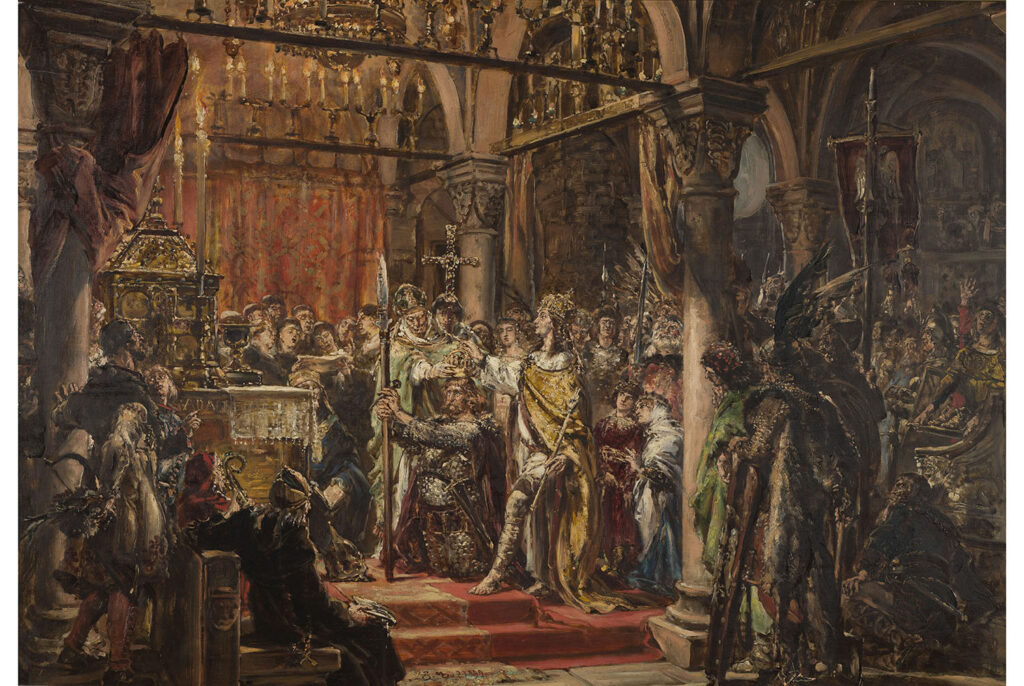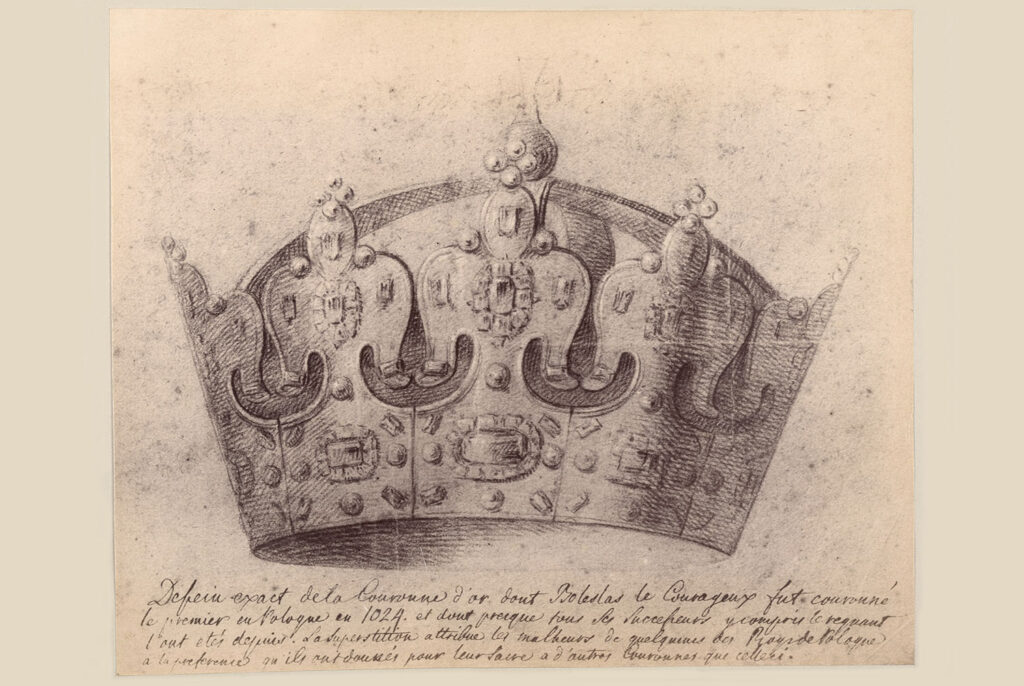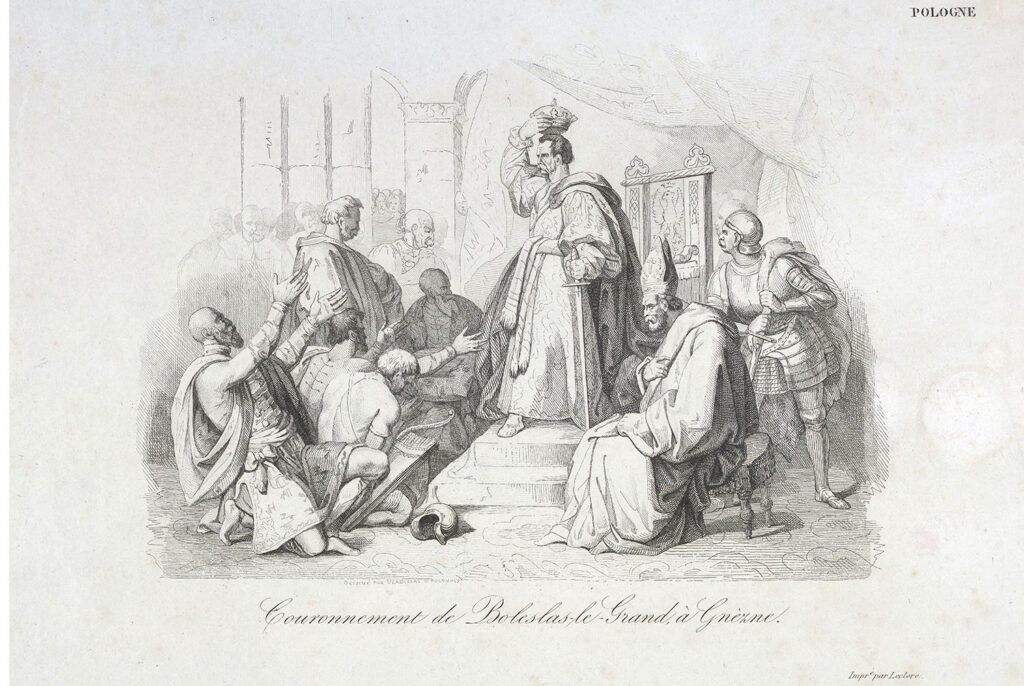In 2025, we celebrate the Millennium of the Kingdom of Poland, marking the anniversary of the coronation of Duke Bolesław the Brave as King of Poland in Gniezno in the year 1025.
The Crown of Chrobry
A tradition that led to the formation of a nation. A symbol of sovereignty and a proud past. A heritage invoked in the struggle for the reunification of the state in the 13th century and in the centuries that followed. A manifestation of independence. The Polish crown. Bolesław the Brave was the first to place the Polish crown upon his head. And although this happened in Gniezno, most likely on Easter in the year 1025, in the centuries that followed, Wawel became the most important royal stronghold.
Historical sources remain silent on the appearance of Chrobry’s Crown. It was likely made of gold and adorned with precious stones. After the death of Bolesław the Brave, his son Mieszko II was crowned King of Poland. Unfortunately, he suffered a severe defeat following invasions by Rus’ and German forces, resulting in the loss of power. The reins were taken over by Mieszko II’s half-brother, Bezprym – Chrobry’s firstborn son, who never recognized his brother’s reign and believed that Mieszko had usurped Bolesław’s crown. Bezprym seized the throne for a short time, and is said to have sent the crown and other royal insignia to the German emperor as an act of submission. According to another version, the royal regalia were taken to Germany by Queen Richeza, Mieszko II’s wife. The crown of Poland’s first king was never recovered or found, and over the centuries it became the stuff of legend. That is why, when Władysław the Elbow-high was crowned King of Poland, his crown was called the Crown of Chrobry.
Royal Małopolska
The capital of the Małopolska Region, Kraków, is also the capital of the Polish Crown – it was here, beginning in 1320, that coronations were held. It is here that treasures from the early days of the Polish state are preserved: the Holy Lance of Saint Maurice at the John Paul II Cathedral Museum on Wawel Hill, the coronation sword Szczerbiec in the Crown Treasury of the Royal Castle on Wawel, and the denarius of Bolesław the Brave in the Numismatic Cabinet of the Emeryk Hutten-Czapski Museum, a branch of the National Museum in Kraków.
Reminders of the Polish Crown can be found at every turn in Małopolska. Castles, towers, and defensive walls in towns and cities are traces of successive kings and witnesses to a great history — a history that began a thousand years ago.





